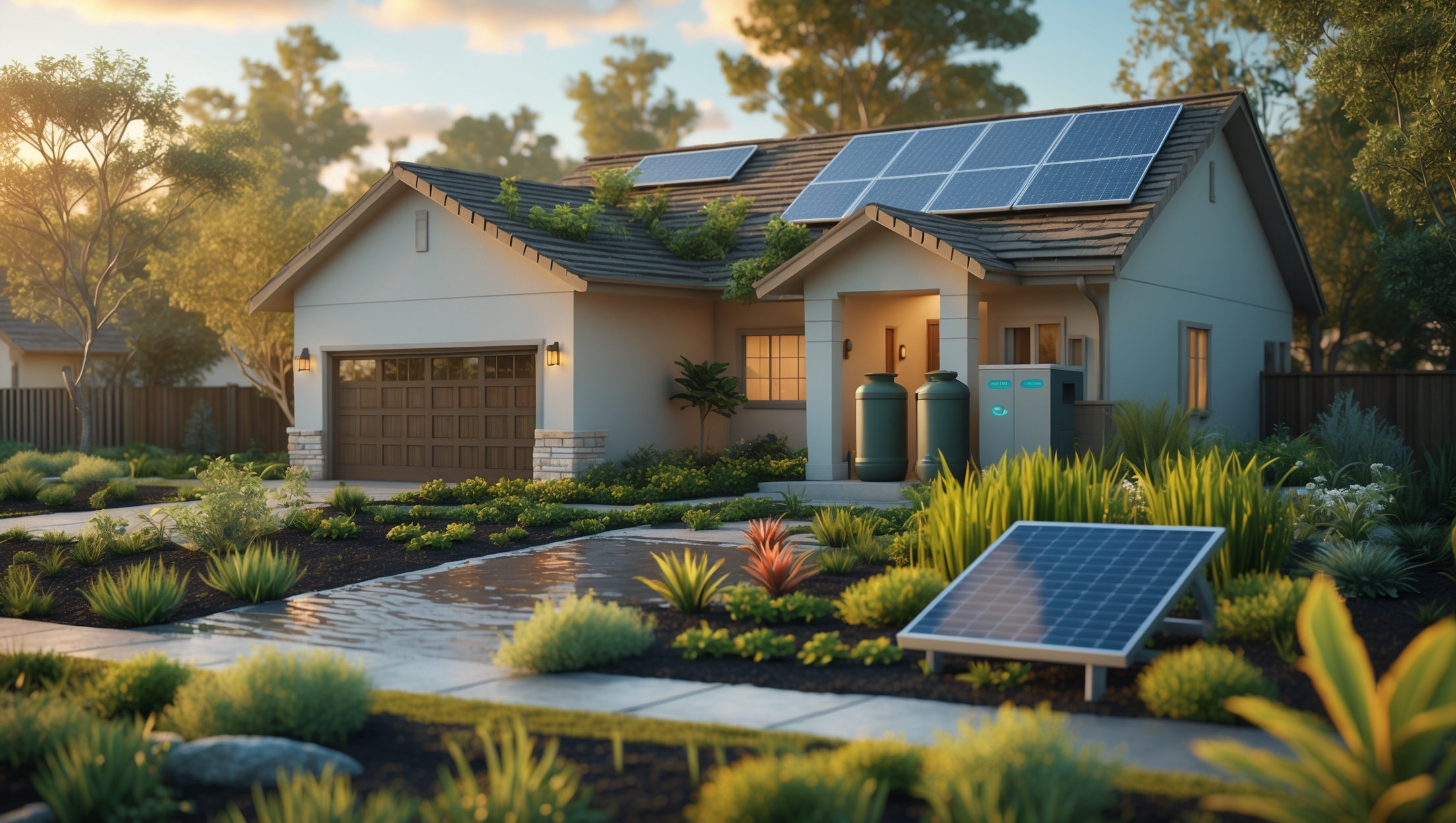Introduction: The Overlooked Side of Rainwater Harvesting
Rainwater harvesting is growing in popularity among homeowners seeking sustainable living solutions. By capturing and reusing rainwater, you can reduce your environmental footprint, save money on utility bills, and increase your home’s resilience in times of drought. However, while much attention is given to system design, installation, and maintenance, a critical aspect is often neglected: insurance and risk management. Without proper coverage, an investment in rainwater harvesting can be at risk from property damage, system failure, liability claims, and regulatory issues. In this comprehensive guide, we will explore the insurance essentials every homeowner should know before, during, and after installing a rainwater harvesting system. You’ll learn about specific risks, coverage types, common claim scenarios, documentation best practices, and actionable tips to protect your green investment—ensuring your path to sustainable water use is secure and stress-free.
Understanding the Risks: What Can Go Wrong?
Rainwater harvesting systems, while robust and eco-friendly, are not without risks. Recognizing these hazards is the first step in effective risk management and insurance planning.
- Physical Damage: Tanks, gutters, pipes, and pumps can be damaged by storms, falling branches, vandalism, or even accidental impact from vehicles or machinery.
- Water Contamination: Improper filtration or maintenance can lead to contamination, resulting in property damage, health risks, or regulatory violations.
- Flooding and Overflows: Overflow due to inadequate system capacity, clogged filters, or extreme rainfall can cause water damage to your home and neighboring properties.
- System Failure: Mechanical or electrical failures may interrupt water supply, damage landscaping, or necessitate costly repairs.
- Liability Risks: If your system leaks or overflows and damages adjacent properties, or if someone is injured by exposed tanks or piping, you may be held liable.
- Theft and Vandalism: Rainwater tanks and associated equipment can be targets for theft or deliberate damage.
Insurance Coverage Options: What You Need to Know
Most homeowners assume their standard home insurance policy will automatically cover a rainwater harvesting system. This is not always the case. Below, we outline the coverage types and critical questions to consider.
1. Dwelling vs. Personal Property Coverage
Rainwater harvesting systems permanently affixed to your home (e.g., rooftop gutters, plumbed tanks) may be covered under your dwelling insurance. Standalone tanks, pumps, or removable equipment are often classified as personal property. Clarify with your insurer which components are covered under each section.
2. Additional Structures Endorsement
If your system includes separate tanks or filtration sheds located away from the main dwelling, they may require a specific ‘other structures’ endorsement. Failing to declare these can result in denied claims.
3. Equipment Breakdown Coverage
Pumps, UV sterilizers, and filtration units are vulnerable to mechanical or electrical failure. Equipment breakdown insurance (sometimes called machinery breakdown) can cover repair or replacement costs not included under standard policies.
4. Water Damage and Flood Coverage
Standard home insurance often excludes damage from flooding or water backup unless optional riders are purchased. Confirm whether overflow or backup from your rainwater system is included, and consider flood insurance if your area is prone to heavy rainfall.
5. Liability Protection
If your system causes damage to neighboring property or injures a visitor, personal liability coverage is essential. Discuss with your agent whether your current limits are sufficient, especially if your system has high-capacity tanks or is accessible to the public.
6. Theft and Vandalism
Outdoor tanks and pumps can be targets for theft or vandalism. Confirm whether your policy covers these risks, and consider security upgrades to minimize them.
Common Claim Scenarios: Lessons from Real Cases
Understanding real-world claim scenarios can help you anticipate risks and avoid costly mistakes:
- Overflow During Storms: A homeowner’s rainwater tank overflowed during a record rainfall, causing water to seep into the basement. The insurer denied the claim, citing lack of flood coverage.
- Pump Failure: An electrical surge damaged the system’s pump, leading to loss of water supply for irrigation. The claim was only honored because the homeowner had equipment breakdown coverage.
- Contamination Incident: A poorly installed filter allowed debris into the water supply, damaging indoor fixtures. The insurer required documentation proving proper installation and maintenance before accepting the claim.
- Liability Lawsuit: Overflow from a homeowner’s tank flooded a neighbor’s garden, resulting in a liability claim. The payout was limited by the policy’s low liability limits.
- Theft of Tank: A high-value stainless steel tank was stolen from an unfenced yard. The insurer denied the claim because the tank was not specifically listed on the policy.
How to Ensure Your System is Properly Covered
Follow these steps to secure comprehensive insurance coverage for your rainwater harvesting system:
1. Notify Your Insurer Before Installation
Contact your insurance provider before you install the system. Provide details about the type, value, and installation method of each component. This ensures new risks are assessed and coverage adjusted accordingly.
2. Obtain Permits and Comply with Regulations
Many jurisdictions require permits for large tanks or systems connected to indoor plumbing. Insurers may deny claims for unpermitted installations or those not compliant with local codes.
3. Document Everything
- Keep receipts, installation manuals, and photographs of all components.
- Retain copies of permits, inspection reports, and maintenance logs.
- Share these documents with your insurer to validate your claim in case of loss.
4. Update Your Inventory and Policy
List all major system components—tanks, pumps, filtration units—on your home inventory. If your policy requires scheduling high-value items, ensure they are individually listed with replacement values.
5. Review and Adjust Coverage Limits
Work with your agent to adjust your dwelling, personal property, and liability limits to reflect the value and potential risks of your system. Don’t forget to include new outbuildings or sheds used for the system.
6. Consider Specialized Riders
- Add equipment breakdown coverage for pumps and electronics.
- Purchase flood or water backup riders if appropriate for your region.
- Ask about green upgrade endorsements, which may pay for eco-friendly replacements after a loss.
Risk Reduction: Practical Steps to Minimize Claims
Insurers often reward proactive risk management with lower premiums or fewer exclusions. Here’s how to reduce your risk profile:
- Install Overflow Protection: Use automatic overflow diverters and alarms to prevent system overfill.
- Secure Tanks and Equipment: Use fencing, locks, and tamper-proof hardware to deter theft and vandalism.
- Maintain Filters and Pumps: Follow a regular maintenance schedule and document all work.
- Check Gutters and Downspouts: Clear debris regularly to prevent blockages and water backup.
- Protect Against Electrical Surges: Use surge protectors or dedicated circuits for pumps and electronic controllers.
- Post Warning Signs: Alert visitors to potential hazards (e.g., deep tanks, moving parts) to minimize liability risks.
- Install Backflow Prevention: If your system connects to indoor plumbing, install backflow preventers as required by code.
Communicating with Your Insurance Agent: Key Questions
Insurance policies can be complex, and every provider’s stance on rainwater harvesting systems may differ. When discussing your setup, ask the following:
- Does my policy automatically cover rainwater harvesting systems, or do I need to add an endorsement?
- Are all components—tanks, pumps, filtration units—covered for theft, vandalism, and storm damage?
- Is damage from water overflow, backup, or flooding included? If not, what riders are available?
- What documentation do I need to provide to ensure full coverage?
- Will installing this system affect my premiums or deductibles?
- If I expand or upgrade my system, how should I update my policy?
- Are there discounts for green upgrades or risk reduction measures?
Best Practices for Filing Claims
If you ever need to file a claim related to your rainwater harvesting system, follow these best practices to maximize your chances of a smooth, successful outcome:
- Report losses promptly—delays can lead to denied claims.
- Submit all supporting documentation: receipts, photos, maintenance logs, and permit records.
- Provide a detailed description of the incident and the losses incurred.
- Retain damaged components if possible, for inspection by adjusters.
- Keep a record of all communications with your insurer.
Future-Proofing: Insurance for System Upgrades and Expansions
As your needs evolve, you may wish to expand your rainwater harvesting system with larger tanks, advanced filtration, or even integration with greywater recycling. Each upgrade can alter your risk profile and coverage needs. Before making changes:
- Inform your insurer about planned upgrades or expansions.
- Update your policy to reflect increased system value and potential new liabilities.
- Review local regulations, as new components may trigger additional permit or inspection requirements.
- Reassess your risk management measures—new equipment may require enhanced security or maintenance protocols.
Conclusion: Safeguarding Your Sustainable Water Investment
Investing in a home rainwater harvesting system is a powerful step toward sustainable living, water conservation, and greater self-sufficiency. But just like any major home improvement, it introduces new risks that require careful management. By understanding the unique vulnerabilities of rainwater systems, proactively engaging with your insurance provider, and following best practices for documentation and risk reduction, you can ensure your investment is protected from unexpected setbacks. Regularly review and update your coverage as your system evolves, and don’t hesitate to seek out specialized endorsements or riders that address the specific features of your setup. In the event of a claim, thorough preparation and clear communication can make all the difference. Ultimately, proper insurance and risk management empower you to enjoy the benefits of sustainable water solutions with peace of mind—knowing that your home, your finances, and your environmental values are all safeguarded for the future.





Can you provide some examples of the most common claim scenarios you’ve seen with rainwater harvesting systems? I want to understand what might actually happen in real life so I can prepare and manage those specific risks.
Certainly! Common claim scenarios with rainwater harvesting systems often involve water damage to the home due to tank leaks or overflow, contamination of stored water leading to health concerns, and damage to the system from severe weather such as hail or wind. There can also be issues if the system’s installation damages plumbing or foundations. Being aware of these risks can help you take preventive measures like regular maintenance and professional installation.
Could you explain what kind of documentation I should keep on hand before and after installing a rainwater harvesting system to make the claims process smoother if something goes wrong?
Before installing your rainwater harvesting system, keep detailed records like purchase receipts, installation contracts, equipment manuals, and any permits or compliance certificates. After installation, update your documentation with photos of the completed setup, ongoing maintenance logs, and service records. These documents will help prove ownership, condition, and proper upkeep, making it easier if you ever need to file an insurance claim.
I noticed you mentioned liability if a rainwater harvesting system overflows and damages a neighbor’s property. Does typical homeowners insurance usually cover this, or do I need to add a specific rider or separate liability policy for protection?
Most standard homeowners insurance policies include liability coverage for accidental damage to a neighbor’s property, which can extend to situations like a rainwater system overflowing. However, coverage details can vary, and some insurers might have exclusions or require you to disclose your rainwater harvesting setup. It’s a good idea to check with your insurance provider to confirm coverage or see if a specific rider is needed for full protection.
I’m curious how insurance providers usually handle contamination risks with rainwater systems. If there’s an issue with water quality that results in health concerns or property damage, is that something most policies will cover, or are there specific exclusions?
Most standard home insurance policies do not automatically cover contamination risks linked to rainwater harvesting systems. Insurers often view water quality issues as maintenance-related, which are typically excluded. However, some providers may offer endorsements or special coverage for damage or health problems caused by contaminated water. It’s important to review your policy details and speak directly with your insurer to clarify any exclusions or to discuss adding specific protection for your system.